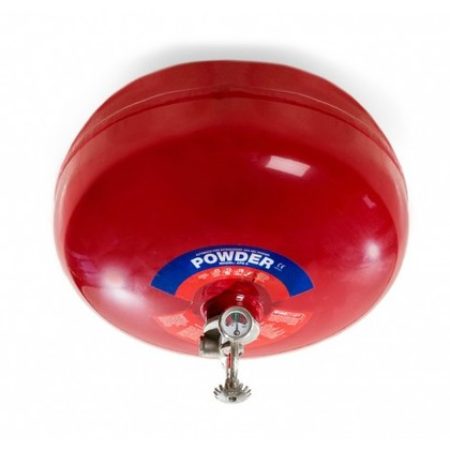Automatic Dry Powder Fire Extinguisher
APPLICATIONS
- Data recording: Tracks fire equipment and their inspection requirements
- Historical data: Helps with preventive maintenance and identifying failures
- Consistency: Helps ensure that fire extinguisher inspections are consistent
- Customer service: Offers responsive and knowledgeable support
- Ease of use: Easy to set up and deploy
FEATURES
Fire detection
- Sensors: Use advanced sensors to detect fires
- Early warning: Can provide early warning of a potential fire
Suppression
- Discharge mechanisms: Release suppression agents like water, foam, chemicals, or dry powder onto the fire
- Rapid response: Can quickly suppress fires to prevent them from spreading
Monitoring
- Real-time monitoring: Can monitor fire detection and alarm devices in real time
- Remote control: Can remotely control fire detection and alarm devices
- Integration with building management systems: Can integrate with building management systems to enhance situational awareness and responsiveness
Other features
- Standby power: Can have standby power for power failure
- Remote control and communication: Can have remote control and communication features
- Alert people: Can alert people in time to help save lives
- Prevent disaster: Can play a crucial role in preventing disaster
TECHNICAL SPECIFICATIONS
| Component | Specification | Details |
|---|---|---|
| System Type | Automatic Fire Extinguisher System (AFES) | Systems can include CO2, water mist, foam, or clean agents depending on risk assessment. |
| Applicable Standards | NFPA 2001, EN 15004, BS 5306, Local Fire Safety Codes | Must comply with national and international fire safety standards. |
| Detection System | Type of Sensors | Smoke, heat, or flame detectors based on the application (e.g., smoke for office spaces, heat for industrial zones). |
| Control Panel | Features | Should include: automatic activation, alarm notifications, manual override, system status display, event history logging, remote monitoring capability. |
| Suppression Agent | Type | CO2, water mist, foam, or clean agents (e.g., FM-200, Novec 1230), selected based on the environment. |
| Discharge Network | Piping & Nozzles | Properly designed to provide uniform agent distribution throughout the designated area. |
| System Installation | Design Requirements | Must cover high-risk areas such as electrical rooms, server rooms, and kitchens. Nozzles to be strategically placed for efficient discharge. |
| Manual Override | Manual Activation | Includes a manual release button or pull station for emergency operation. |
| Inspection Frequency | Routine Inspections | Monthly visual inspection, annual testing and servicing. |
| Testing & Calibration | System Testing | Calibration of detectors (sensitivity and response time), system pressure, and discharge test. |
| Refilling & Recharging | Extinguishing Agent | CO2 and clean agents require periodic refilling, while water-based systems need inspection for leaks and agent quantity. |
| Maintenance Requirements | Routine & Corrective Maintenance | – Replace worn or defective components (detectors, nozzles, valves, etc.) – Regular check for leaks, blockages, or damage. |
| Compliance | Certifications | Fire extinguisher system must be approved by local fire authorities and meet regional compliance standards. |
| Emergency Service | Availability | On-call service for emergency repairs or system activation. |
| System Performance Tests | Frequency | Annual performance tests, including detection response time, discharge efficiency, and alarm verification. |
| Documentation & Reporting | Records Maintenance | Logs of system tests, service visits, component replacements, and calibration must be maintained for compliance verification. |

